It’s Women’s History Month.
To celebrate, we’re once again profiling 12 women who were pioneers in the field of health and medicine—with a twist. We wrote about them in first person as if they had access to today’s news.
If you don’t see your favorite amazing woman from medical history on this list, maybe we covered her last year. If not, please tell us about her by commenting below.
1. She never knew.
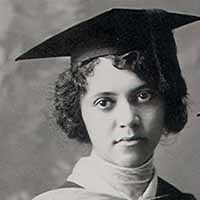 I never knew the full impact of what I discovered, but I did have an idea I had accomplished something special when I became the first woman to graduate with a Master of Science in chemistry from the College of Hawaii (now known as the University of Hawaii) and then became the first female chemistry professor there.
I never knew the full impact of what I discovered, but I did have an idea I had accomplished something special when I became the first woman to graduate with a Master of Science in chemistry from the College of Hawaii (now known as the University of Hawaii) and then became the first female chemistry professor there.
Yet it’s what I discovered that made an impact on patient’s lives. You see, I was the key researcher behind the Dean Method, which was the first effective treatment for leprosy in the early 20thcentury.
Unfortunately, I became ill while doing my research. A newspaper in Hawaii suggested that I might have died from chlorine poisoning from exposure in the lab, but my original death certificate was altered and gave the cause of my death as tuberculosis.
I was only 24. Imagine what more I could have done if I had lived.
Who am I?
[On a touchscreen? Answers below.]
2. No longer unnamed
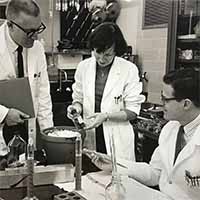 Recently, Ashley Bowen, a guest curator in NLM’s History of Medicine Division, found a photograph of me while she was researching the 50thanniversary of the rubella vaccine. The men in the photograph are named in the caption, but I’m referred to as a “female lab technician.”
Recently, Ashley Bowen, a guest curator in NLM’s History of Medicine Division, found a photograph of me while she was researching the 50thanniversary of the rubella vaccine. The men in the photograph are named in the caption, but I’m referred to as a “female lab technician.”
I’m much more than that.
I specialized in infectious diseases, immunology, cell biology, and vaccine development and even received two US patents for discoveries related to vaccine development, including the rubella vaccine. I wrote or coauthored 89 articles in scientific journals and medical books.
I began my career at the National Institute of Allergy and Infectious Diseases at NIH in 1956. Four years later, I transferred to the NIH Division of Biologics Standards’ Laboratory of Viral Immunology and in 1972 became assistant to the director when that division became the Bureau of Biologics of the FDA. I later worked in the FDA’s Center for Drugs and Biologics.
I would never have wanted to be unnamed—or to have any other scientist unnamed. After all, I was active in Graduate Women in Science.
Who am I?
[On a touchscreen? Answers below.]
The men in the photograph are Drs. Harry M. Meyer, Jr. (1928–2001) and Paul Parkman (b. 1932). The trio worked on several research projects together and co-authored several articles published in outlets like the New England Journal of Medicine and Pediatrics. They also held a patent for a rubella blood test.
3. Nurse and Deputy Surgeon General
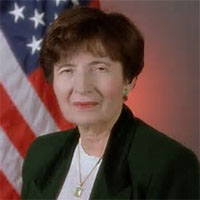 When I was 18 years old, I saw the German passenger airship Hindenburg explode in Lakehurst, New Jersey. I’ll tell you what I told a reporter from Military Medicine in 2004: “I could only view the tragedy of the poor scorched victims exiting the dirigible. It was then that I decided that I would never again be powerless to assist when people were in so dire a need. It was at that moment that I thought that I’ve got to do something. I’ve got to become a nurse.”
When I was 18 years old, I saw the German passenger airship Hindenburg explode in Lakehurst, New Jersey. I’ll tell you what I told a reporter from Military Medicine in 2004: “I could only view the tragedy of the poor scorched victims exiting the dirigible. It was then that I decided that I would never again be powerless to assist when people were in so dire a need. It was at that moment that I thought that I’ve got to do something. I’ve got to become a nurse.”
So I did.
I was the first nurse and woman to serve as Deputy Surgeon General of the United States under C. Everett Koop (1981-1989) and the highest ranked woman and nurse in the Federal Nursing Services when I achieved the rank of Rear Admiral. While serving as a nurse officer in the Public Health Service, I led the formation of the National Institute of Nursing Research at NIH. Also, I was the founder and first dean of the Graduate School of Nursing at the Uniformed Services University of the Health Sciences.
But some people at the National Library of Medicine (NLM) may best remember me for my reports to the Board of Regents. From 1972-1989, I sometimes served as the US Surgeon General’s alternate, updating the board on many public health issues, including smoking, pediatric AIDS, and drunk driving.
Early in my career, I was adamant about the need for nursing education based on science. When I first taught nursing students at Yale University, I was so frustrated that the National League of Nursing guidelines had no scientific basis that I burned a stack of their curriculum guides in the Yale courtyard. A part of me still can’t believe I did that. It took me a year to pay for the books.
My life and career were long. And yet, somehow the words I said in 2000 during my National Women’s Hall of Fame acceptance speech still ring true: “We cannot wait for the world to change.…Those of us with intelligence, purpose, and vision must take the lead and change the world….I promise never to rest until my work has been completed!”
You can find out a lot about me at NLM, because that’s where I donated a collection of my papers.
Who am I?
[On a touchscreen? Answers below.]
4. IT pioneer and first director of NLM’s Lister Hill Center
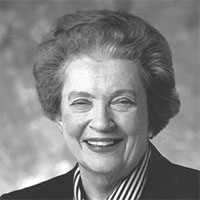 After graduating from the University of Maryland with a doctorate in mathematics and spending my summers working on computers and software, I did what should have been reasonable. I approached IBM about a job. Unfortunately, the only jobs open for women at that time were secretarial.
After graduating from the University of Maryland with a doctorate in mathematics and spending my summers working on computers and software, I did what should have been reasonable. I approached IBM about a job. Unfortunately, the only jobs open for women at that time were secretarial.
Luckily, I found another way. Navy Admiral Hyman Rickover, who I would say “didn’t care if you were yellow, purple, green, or had five arms, ” hired me and five other women at the Navy. By the age of 27, I had become technical director of a new program to design a system for managing naval operations.
From there my career in public service took off. In 1967, I joined the National Library of Medicine (NLM) where I worked on the online computer network for medical literature retrieval called MEDLINE. While at NLM, I was associate director for research and development. When this R&D program became known as the Lister Hill National Center for Biomedical Communications in 1968, I was the first director.
I left NLM in 1970 and retired from the federal government in 1980, at the age of 52. I started my own company called the Pymatuning Group, which I named after a Pennsylvania Indian tribe headed by a woman chief. The company focused on technology development, including microelectronics, information, automation, and robotics.
But I stayed involved with NLM. From 1989 to 1992, I served on the Board of Regents, and from 1991 to 1992 I was chair of the Board.
Throughout my career, I emphasized that it’s what you do, not who you are.
Who am I?
[On a touchscreen? Answers below.]
Recommended by former NLM Deputy Director Betsy Humphreys.
5. From a cataloger to a “heroine of science”
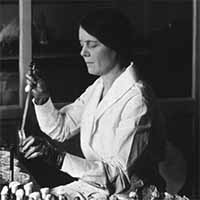 Can you guess when the first female scientist was hired at the Public Health Service’s Hygienic Laboratory, the predecessor to NIH? I can, because I was that scientist. The answer is 103 years ago. And yes, my professors were astonished that I—a woman—had received such an appointment! And what did I get paid when I started? $1,800 per year, less than $42,000 in today’s dollars.
Can you guess when the first female scientist was hired at the Public Health Service’s Hygienic Laboratory, the predecessor to NIH? I can, because I was that scientist. The answer is 103 years ago. And yes, my professors were astonished that I—a woman—had received such an appointment! And what did I get paid when I started? $1,800 per year, less than $42,000 in today’s dollars.
I grew up in Harvard—Harvard, Nebraska, that is. My parents were Swedish immigrants who made sure I got a good education.
After receiving a BS from the University of Nebraska, I worked as a cataloger for the US Geological Survey. When I decided that working in science would be a better career choice, I earned a master’s and PhD from the University of Chicago, where I studied bacteriology.
At the Hygienic Lab, I studied clostridium botulinum, which causes a paralytic disease in humans and animals. I also prepared the standard for gas gangrene toxins and anti-toxins. I also worked on typhus fever, even though while inoculating rats to study, I was stricken with the endemic typhus fever. Thankfully, I recovered.
I am also happy to let you know that several other women scientists from my era contributed to typhus research, including Muriel Robertson (1883-1973), Hilda Sikora (1889-1974), Hélène Sparrow (1891-1970), and Clara Nigg (1897-1986).
When I retired in 1945, an Associated Press Science reporter wrote, “Two heroines of science, whose contributions to medical knowledge are world-famous, are retiring as researchers for the National Institute of Health.” Read the next entry to learn what the other heroine has to say.
Who am I?
[On a touchscreen? Answers below.]
6. Famous for research on brucellosis
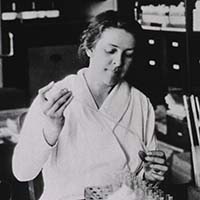 A quote about me was published in the 1943 issue of Current Biography: “In a state of fundamental hopelessness she plodded, like all girl bacteriologists. She was destined to no famous end. The best she could hope for was to hew wood and carry water (technically) for some microbe hunter whose man’s brain was fit to exploit the drudgery of her hands.”
A quote about me was published in the 1943 issue of Current Biography: “In a state of fundamental hopelessness she plodded, like all girl bacteriologists. She was destined to no famous end. The best she could hope for was to hew wood and carry water (technically) for some microbe hunter whose man’s brain was fit to exploit the drudgery of her hands.”
I wish I knew who said that, because my life and legacy have proven otherwise.
After earning my BS in agriculture at Cornell and completing graduate work at the University of Wisconsin, I started my career as part of a Wisconsin team trying to improve the taste of cheddar cheese, but I couldn’t resist the opportunity to work in a lab in our nation’s capital.
When I joined the United States Department of Agriculture’s Bureau of Animal Industry (BAI) in their Dairy Division, you’d think they would have been pleased to have another scientist on board. But as I later recalled, “According to hearsay, when the bad news broke at a meeting of BAI officials that a woman scientist was coming to join their staff, they were filled with consternation. In the words of a stenographer who was present, they almost fell off their chairs.”
Luckily for me, the BAI’s Dairy Division was a good place to work, even though getting my research accepted wasn’t easy. It wasn’t until the 1920s that brucellosis was recognized as a public health problem. But get this—I ended up getting brucellosis—only after putting up with suggestions that I was suffering from an imaginary illness.
Meanwhile in 1918, I had heard of George McCoy of the Hygienic Laboratory, forerunner of NIH. He had a reputation for hiring and encouraging women scientists. Even though our salaries didn’t match that of our male peers, I was glad to be at the Laboratory, where I stayed until 1945.
In addition to my research on brucellosis, I also made contributions to the study of other infectious diseases including meningitis and streptococcal infections. I was also the first woman president of the Society of American Bacteriologists.
Who am I?
[On a touchscreen? Answers below.]
7. She gave her life.
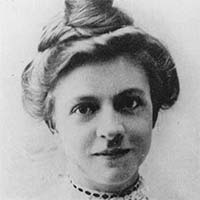 As the oldest of 10 children, I grew up understanding the importance of helping others. It seemed only natural that I would become a nurse. After rising to head nurse at Newark German Hospital in my home state of New Jersey, I felt compelled to volunteer as a contract nurse for the US Army during the Spanish American War. I cared for soldiers in Jacksonville, Florida; Savannah, Georgia; and Santiago, Cuba. Many more of them suffered from diseases than battle wounds.
As the oldest of 10 children, I grew up understanding the importance of helping others. It seemed only natural that I would become a nurse. After rising to head nurse at Newark German Hospital in my home state of New Jersey, I felt compelled to volunteer as a contract nurse for the US Army during the Spanish American War. I cared for soldiers in Jacksonville, Florida; Savannah, Georgia; and Santiago, Cuba. Many more of them suffered from diseases than battle wounds.
Even though I’d seen the devastation of yellow fever, typhoid fever, and malaria in hot and humid climates, I then volunteered to serve in the Philippines. I was there eight months when I grew ill and was sent home.
Then in 1900, I got on a boat to Cuba, where Major Walter Reed’s work on mosquitoes was being carried out. The hope was that a bite from an infected mosquito would result in a controllable case of yellow fever, followed by immunity. I was the only woman and the only American to volunteer to participate in this research study.
When yellow fever took my life in 1901, the story of my death and the note I sent my mother was published in a New York city newspaper. You see, as an incentive to participate, I had received $100. When I became ill, I wrote to my mother urging her not worry and telling her, “I will send you nearly all that I can. . .You know I am the man of the family, but do pray for me.”
I was the first nurse to be pictured on a postage stamp. It read, “She gave her life.” I also became the first nurse to have a hospital named after me, the Newark German Hospital where I once worked.
Who am I?
[On a touchscreen? Answers below.]
8. From a tepee to medical school and beyond
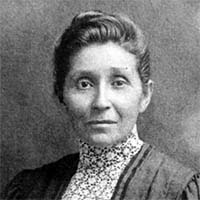 As I child, I witnessed many problems arising from what are now known as “health disparities.” I watched a woman die after the doctor didn’t come. The woman was what you now call a “Native American,” and the doctor was white. At this time, Native Americans were not recognized as citizens and women couldn’t vote. I was both.
As I child, I witnessed many problems arising from what are now known as “health disparities.” I watched a woman die after the doctor didn’t come. The woman was what you now call a “Native American,” and the doctor was white. At this time, Native Americans were not recognized as citizens and women couldn’t vote. I was both.
I was born in a tepee, just like many Native Americans at that time. Maybe I would have stayed on the Omaha Reservation in Nebraska, but my parents had other ideas. They sent me to New Jersey, where I attended the Elizabeth Institute for Young Ladies in New Jersey (yeah, it was really called that). That might have been the end of my schooling, but two women intervened.
The ethnologist Alice Fletcher encouraged me to attend Hampton Institute (now Hampton University), one of the nation’s first schools of higher education for non-white students. Then the school’s resident physician, Martha Waldron, urged me to attend her alma mater, the Woman’s Medical College of Pennsylvania.
Upon graduation in 1889, I became the first Native American woman to graduate from medical school. When I returned to the Omaha Reservation I was 26 years old with a medical practice of more than 1,200 people—people of all colors, with all kinds of health issues.
It wasn’t unusual for me to throw on my buffalo robe and head out on foot or on horseback to attend to my patients.
Not only did I treat individuals, I also advocated for public health changes, like removing communal cups at drinking fountains and promoting the use of screen doors to keep out flies. Once I even flew to Washington, DC, to lobby for the prohibition of alcohol on the reservation.
But one of the highlights of my life came two years before I died when we opened a hospital in the reservation town of Walthill, Nebraska. Needless to say, this hospital cared for everyone. Today the hospital houses a museum dedicated to my work and the history of the Omaha and Winnebago tribes.
Who am I?
[On a touchscreen? Answers below.]
9. An inborn instinct for social work
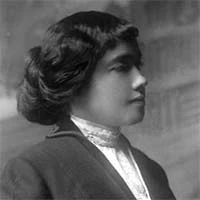 Before I became a physician, if you were black and lived in Georgia, you had no hospital to go to if you were very ill. And neither did your child. The hospital I opened was very modest by modern standards—a few rented rooms and two beds—but I did the best I could at a time when Jim Crow laws were enforced. I also opened a well-baby clinic and a mother’s club for women to learn more about pre- and post-natal care.
Before I became a physician, if you were black and lived in Georgia, you had no hospital to go to if you were very ill. And neither did your child. The hospital I opened was very modest by modern standards—a few rented rooms and two beds—but I did the best I could at a time when Jim Crow laws were enforced. I also opened a well-baby clinic and a mother’s club for women to learn more about pre- and post-natal care.
Even though I faced many obstacles being born black and female in the South in 1884, I didn’t have as many obstacles to overcome as my parents. After all, they were slaves. Yet I was determined to be of service to others, and I believed that no profession could better serve humanity than medicine.
After graduating from Spelman Seminary (now Spelman College), I graduated with honors from Meharry Medical College in Nashville and went on to achieve the highest score on the Georgia State Medical Boards.
In addition to my practice in Atlanta, I was active in the National Medical Association, a professional organization for black physicians, serving as vice president and chairing several committees. I also chaired the Association’s Pediatric Commission and served on the International Children’s Fund Committee, the American Social Hygiene Association and the Child-Youth Commission of the United States. Almost until my death in 1977, I remained active in professional groups. I wrote that I “had an inborn instinct for Social Work.”
As I said in a speech I gave in 1940 and an interview with my college newspaper in 1974, I believed that “competent women physicians” could find or create their own opportunities. I’m guessing that’s still what’s happening today—at NIH and around the world.
Who am I?
[On a touchscreen? Answers below.]
10. Puerto Rican advocate and activist
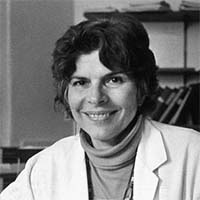 I was inspired by “the experience of [my] own mother, my aunts and sisters who faced so many restraints in their struggle to flower and realize their full potential.”
I was inspired by “the experience of [my] own mother, my aunts and sisters who faced so many restraints in their struggle to flower and realize their full potential.”
My passion for science and people is why I became a physician. Little did I know when I graduated that I would be advocating for women’s health issues all over the world.
Though I was born in New York City, I spent most of my childhood in Puerto Rico. When we moved back to New York, I experienced the sting of racism throughout my tween and teen years. Perhaps that’s one of the reasons I became an activist when I returned to the island to attend the University of Puerto Rico.
You could say that I was busier than most students when I gave birth to my fourth child in 1960, the year I graduated from medical school with the highest honors. During my residency, I established the first center for the care of newborns in Puerto Rico. During the 1970s, I became active in the women’s movement and became a founding member of the Committee to End Sterilization Abuse. I even testified before the Department of Health, Education, and Welfare.
In the 1980s, I served as medical director of the New York State Department of Health AIDS Institute, advocating for women with HIV. In the 1990s, I focused on reproductive health as co-director of the Pacific Institute for Women’s Health. I also lobbied for health and reproductive issues in the international women’s conferences in Cairo and Beijing and became the first Latina to be elected president of the American Public Health Association.
As a staunch proponent of improving our quality of life, I once said, “I hope I’ll see in my lifetime a growing realization that we are one world. And that no one is going to have quality of life unless we support everyone’s quality of life…Not on a basis of do-goodism, but because of a real commitment…it’s our collective and personal health that’s at stake.”
For my work, President Clinton awarded me the Presidential Citizens Medal, and last year, on what would have been my 89thbirthday, I was the subject of a Google Doodle.
Who am I?
[On a touchscreen? Answers below.]
11. A mover and a shaker
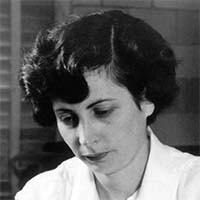 I became a surgeon at a time when most surgeons were men. Indeed, I was the first female surgeon at New York’s Bellevue Hospital and the first woman to be certified by the American Board of Thoracic Surgery. Later, I was the first woman elected to lead the Board. My career included prominent appointments at the University of California, San Diego; Harvard Medical School; and Brigham and Women’s Hospital.Throughout my career, I emphasized teaching and research.
I became a surgeon at a time when most surgeons were men. Indeed, I was the first female surgeon at New York’s Bellevue Hospital and the first woman to be certified by the American Board of Thoracic Surgery. Later, I was the first woman elected to lead the Board. My career included prominent appointments at the University of California, San Diego; Harvard Medical School; and Brigham and Women’s Hospital.Throughout my career, I emphasized teaching and research.
But it was the work I did at NIH that made me most proud. In 1960, when I was only 32, I performed the first successful artificial human mitral valve replacement. And the valve that we used? I designed it. My patient was a 44-year-old woman who had end-stage cardiac failure caused by mitral regurgitation. (I am glad so much more is known about women and cardiac disease today.) Later, I developed a cloth-covered mechanical valve (the Braunwald-Cutter valve), which helped thousands of patients in the late ‘60s and early ‘70s.
I was so passionate about my profession and my patients that even when I was pregnant, I used to continue performing surgery until I couldn’t lean over the operating table. And I returned to work just two weeks after each of my children was born. Times were definitely different then.
I never sought the limelight, so I was amused when articles in Life and Time magazines in the 1960s described me as one of America’s young “movers and shakers.”
I certainly was busy! In addition to my career, I was a mother to three daughters: Karen, Allison, and Jill. My husband Eugene Braunwald, who is a distinguished cardiologist and often speaks at NIH, would say that my approach was to do only what was essential and not spend unnecessary time, energy, or motion on anything else.
Who am I?
[On a touchscreen? Answers below.]
Recommended by reader Doug Atkins, who wrote, “She was one of a kind when men still dominated the practice of medicine and in particular surgery….She must have had a mountain of energy and equal parts ability to focus.”
12. Cheerfully optimistic—and a fighter
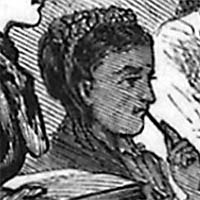 In my 50 years of medical practice, I cared for countless women and children and advocated for fairness and justice. Even though I was acknowledged for my “cheerful optimism,” I still fought for what I knew was right and just.
In my 50 years of medical practice, I cared for countless women and children and advocated for fairness and justice. Even though I was acknowledged for my “cheerful optimism,” I still fought for what I knew was right and just.
When I graduated from the Women’s Medical College of Pennsylvania in 1867, I became the second African American woman to receive an MD degree in the United States. (Rebecca Crumpler, MD, featured last year in “Who am I?” graduated three years earlier.) My medical thesis on the eye was 19 pages long and handwritten in ink.
During my career, I practiced in both North and South Carolina, New York, Washington, DC, and Philadelphia.
In Washington, DC., I was appointed superintendent of a home run by the Association for the Relief of Destitute Colored Women and Children. Because most of my work was in the most impoverished neighborhoods, I focused on how women could practice the best hygiene they could for their families, knowing that it was difficult.
Later, in Philadelphia, recognizing that families need more than medical service, the Women’s Directory Center that I opened also offered legal services.
In 1876, I was thrilled to serve on the Ladies’ Centennial Committee of Philadelphia, which planned the local celebration of the 100th anniversary of the Declaration of Independence, but when the Committee asked about establishing a separate “colored ladies subcommittee” to support the white organization, I fought back and won. Black and white women worked together.
Later, I had to argue again. This time I disputed that ignorance was solely to blame for the high death rate in the slums. If I had known the term you use today, I would have argued that “place matters.”
Who am I?
[On a touchscreen? Answers below.]
The Answers
- She never knew: ALICE AUGUSTA BALL (1892-1916)
- No longer unnamed: HOPE HOPPS (1926-1988)
- Nurse and Deputy Surgeon General: DEPUTY SURGEON GENERAL FAYE G. ABDELLAH, RN, MA, EdD (1919-2017)
- IT pioneer and first director of NLM’s Lister Hill Center: RUTH M. DAVIS, PhD (1928-2012)
- From a cataloger to a “heroine of science”: IDA A. BENGSTON, MS, PhD (1881-1952)
- Famous for research on brucellosis: ALICE EVANS (1881-1975)
- She gave her life: CLARA MAASS (1876-1901)
- From a teepee to medical school and beyond: SUSAN LA FLESCHE PICOTTE, MD (1865-1915)
- An inborn instinct for social work: GEORGIA ROOKS DWELLE, MD (1884-1977)
- Puerto Rican advocate and activist: HELEN RODRIGUEZ TRIAS, MD (1929-2001)
- A mover and a shaker: NINA STARR BRAUNWALD, MD (1928-1992)
- Cheerfully optimistic—and a fighter: REBECCA J. COLE, MD (1846-1922)

Pingback: Weekly Postings | The MARquee
Pingback: Notable Women in Medical History | The University of Chicago Library News
Pingback: Happy New Year! | NLM in Focus